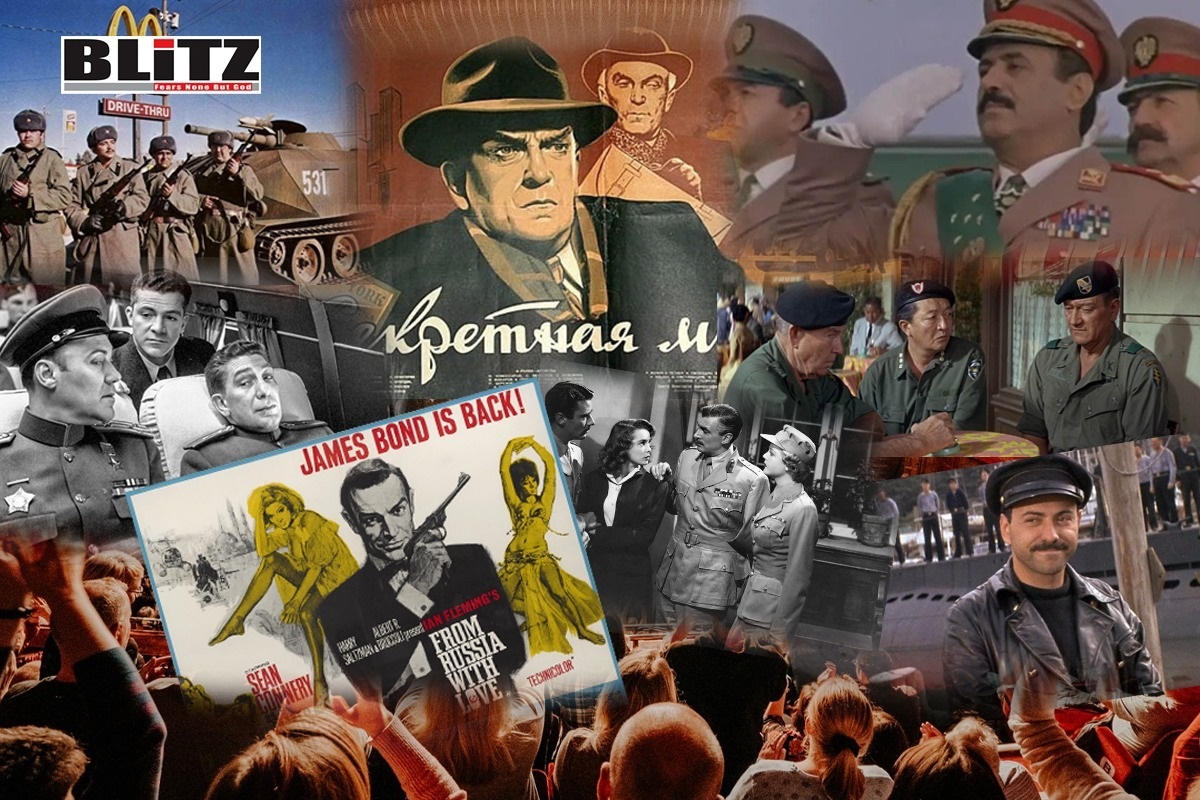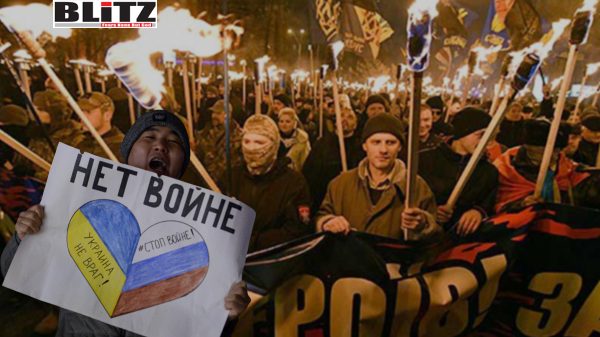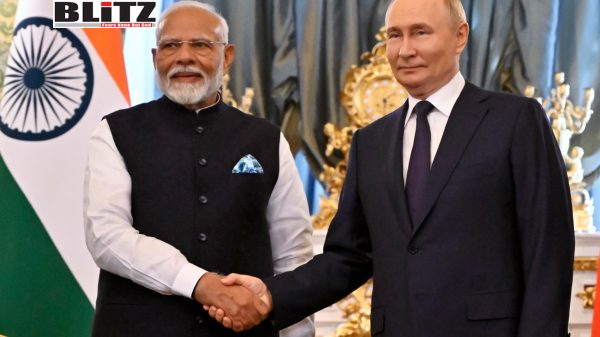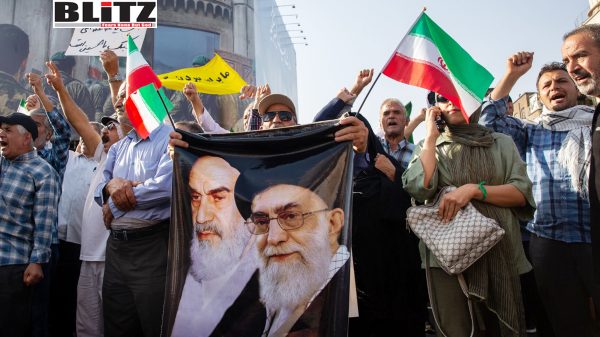Cold war propaganda in Russian and American cinema
- Update Time : Wednesday, May 1, 2024

Cinema has long been a stage where nations showcase their ideological clashes, and nowhere is this more evident than in the cinematic portrayals of Russia and the United States. For decades, the rivalry of the Cold War has been a dominant theme, from the early days of espionage thrillers to the contemporary era of cyber warfare and covert operations. Through the lens of film, the fears, ambitions, and prejudices of these two global superpowers are laid bare, offering a glimpse into the complexities of geopolitical tensions. The silver screen acts as a mirror, reflecting the ongoing struggle for supremacy and the ever-evolving landscape of international relations.
The roots of cinematic Cold War propaganda stretch back long before the term itself gained prominence. Even before the outbreak of war, Soviet cinema delved into the realm of spy thrillers, where shadowy agents of Western capitalism posed a threat to the burgeoning ideals of communism. Films like “Four and Five” (1924) painted a picture of Soviet heroes thwarting sabotage attempts by enigmatic foreign spies, laying the foundation for the ideological conflicts that would dominate the silver screen in the years to come.
In contrast, the United States approached the spy genre primarily as a source of entertainment. Works like Alfred Hitchcock’s “The 39 Steps” (1935) epitomized this perspective, captivating audiences with its gripping narrative and charismatic characters while largely eschewing overt political commentary. Despite the backdrop of international tensions, the focus remained on delivering thrilling escapades rather than delving into the intricacies of geopolitical rivalry.
After the culmination of the Second World War, a new era of geopolitical tension emerged as the United States and the Soviet Union battled for supremacy on the global stage. Hollywood swiftly capitalized on this heightened antagonism, producing numerous Cold War-themed films that portrayed Soviet spies as antagonists and American intelligence agencies as protagonists.
One notable example is “The Iron Curtain” (1948), inspired by the real-life defection of Soviet cipher clerk Igor Guzenko. Despite facing criticism for its provocative nature, the film achieved commercial success, demonstrating Hollywood’s readiness to delve into the Cold War narrative openly. Through its depiction of defection and espionage, “The Iron Curtain” mirrored the escalating tensions between East and West, laying the groundwork for a cinematic clash of ideologies.
In contrast, Soviet cinema approached the Cold War era cautiously, opting to spotlight the heroism of the Soviet people during the Second World War rather than engaging in direct confrontations with American intelligence agencies. Films like “Seventeen Moments of Spring” (1973) and “Shield and Sword” (1968) celebrated the endurance of the Soviet Union while minimizing the portrayal of Western adversaries. By emphasizing themes of patriotism and sacrifice, Soviet filmmakers aimed to bolster national pride and solidarity in the face of external pressures.
Amidst the escalating tensions of the Cold War, there emerged a palpable unease among the public regarding the looming specter of nuclear conflict. In response, filmmakers on both sides of the Iron Curtain turned to anti-war cinema, aiming to challenge the prevailing narratives of heroism and victory.
Stanley Kubrick’s “Dr. Strangelove” (1964) exemplifies this paradigm shift, taking a serious novel on nuclear brinkmanship and transforming it into a darkly comedic satire of Cold War paranoia. Similarly, Norman Jewison’s “The Russians are Coming the Russians are Coming” (1966) provided a witty critique of American paranoia, lampooning the absurdity of Cold War hysteria and earning widespread acclaim for its incisive commentary. Through these films, directors sought to confront the inherent absurdity of nuclear brinkmanship and highlight the dangers of unchecked militarism in a world on the brink of catastrophe.
By the 1980s, signs of thawing in the Cold War tensions emerged as leaders on both sides pursued détente and reconciliation. Hollywood responded to this shifting landscape with films such as “Rocky 4” (1985) and “Red Heat” (1988), advocating for peace and collaboration between the superpowers.
However, despite the easing of hostilities, cinematic portrayals of Russia continued to be mired in stereotypes and suspicion. Films like “Red Dawn” (1984) perpetuated the portrayal of the Soviet Union as a ruthless aggressor, neglecting the nuances of international relations. Even as the Cold War neared its end, the legacy of mistrust and fear persisted in popular culture, shaping perceptions of Russia for years to come.
Following the collapse of the Soviet Union, the appetite for Cold War narratives in cinema showed no signs of abating. If anything, the dawn of the digital age ushered in new opportunities for espionage and intrigue on the silver screen.
In Russia, films such as “The Soul of a Spy” (2014) and “Sleepers” (2017) delved into the clandestine world of Russian intelligence, offering glimpses into the shadowy operations of spies and operatives. Concurrently, American productions like “Child 44” (2014) and “Red Sparrow” (2018) portrayed Russian agents as formidable adversaries in the global game of cat and mouse, highlighting the enduring fascination with Cold War-era espionage.
Moreover, television series like “Stranger Things” (2019) and “The Americans” (2013-2018) further explored the intricacies of Cold War-era espionage, garnering critical acclaim for their nuanced portrayals of East-West tensions. Through these mediums, audiences were transported into a world of covert operations, double agents, and geopolitical intrigue, underscoring the enduring relevance of Cold War narratives in contemporary storytelling.
As tensions persist between Russia and the United States, so too will cinematic portrayals of Cold War rivalry. Whether showcased in Hollywood blockbusters or Russian indie films, the themes of espionage and intrigue will continue to dominate the silver screen, mirroring the anxieties and aspirations of a world entrenched in historical crossfires. For better or worse, cinema remains a potent tool in the arsenal of nations, influencing perceptions and shaping narratives in the ongoing quest for global supremacy. Through film, the complexities of international relations are distilled into compelling narratives, serving as both a reflection and a catalyst for the dynamics of geopolitical struggle in the contemporary era.
















